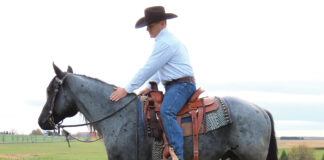Groundwork exercises that check communication between horse and human are a crucial part of my evaluation of a new horse or new horse and rider pairing. If broken down to its most simple form, riding is comprised of asking a horse to go, stop, travel left, and travel right. All these things can be solidified from the ground.
Begin With Light Signals
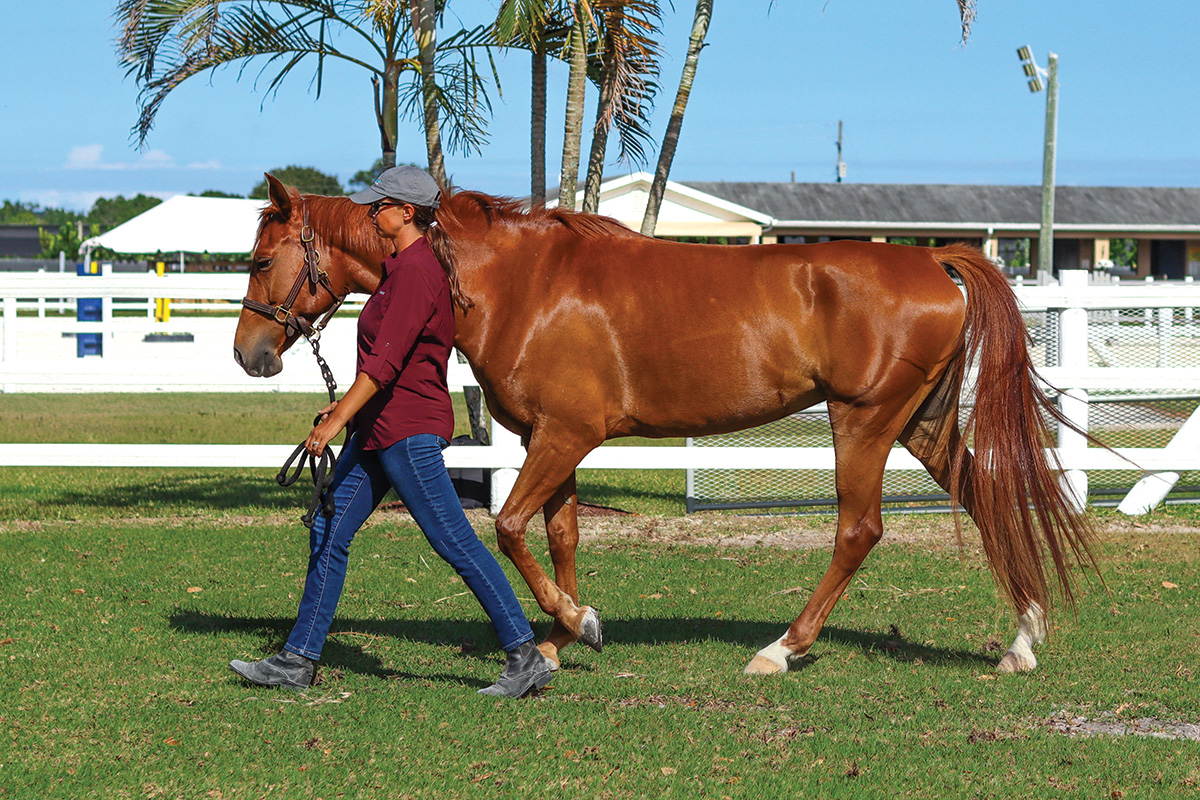
This requires being very tuned into your horse, noticing if he so much as rocks his weight in the desired direction. By consistently sticking to this system of progression followed by reward, your horse is better able to learn what is being asked of him and arrive at the correct answer sooner and with less pressure.
Groundwork Exercise: Hand Walking
When leading your horse, he needs to learn to stay beside you. Horses may be inclined to lag behind, drag ahead, or veer to the side. Establishing firm boundaries helps him understand that he must tune in to you.
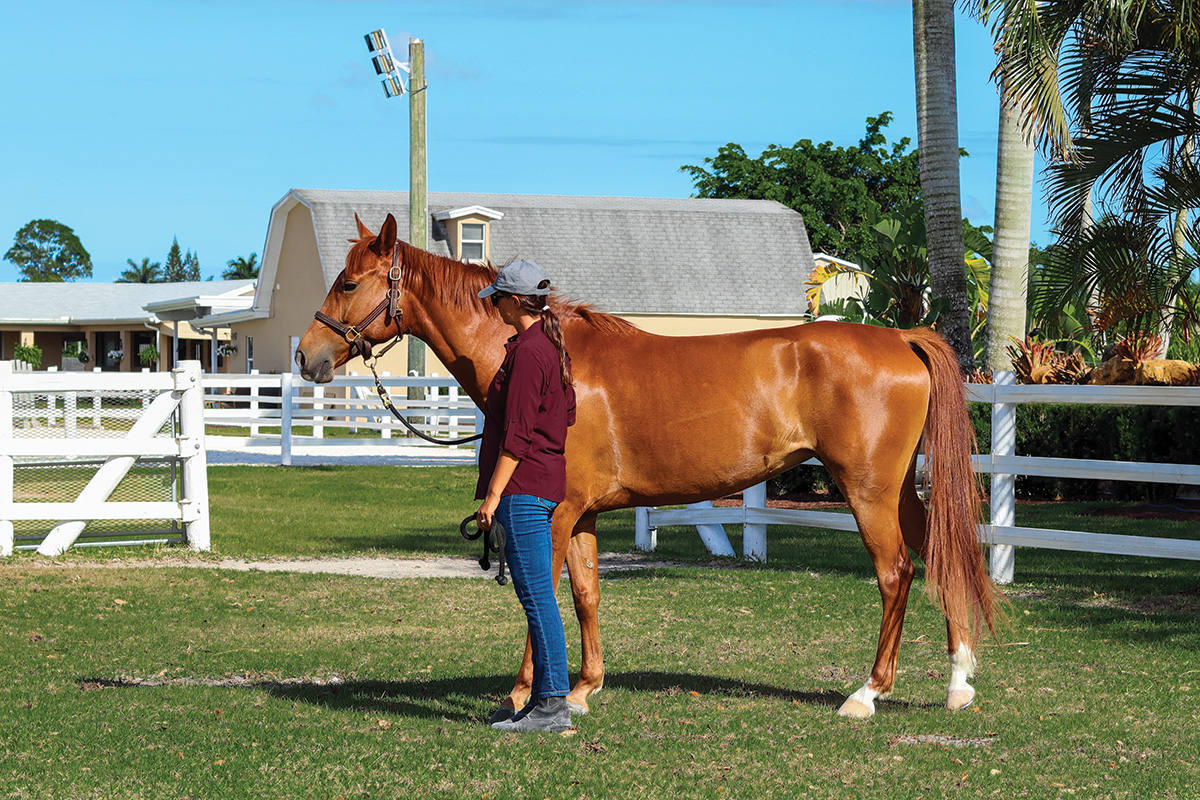
A horse that lags behind can be encouraged with the use of a long dressage whip. Don’t walk excessively fast, but don’t slow down to accommodate him either. If he falls behind enough to put pressure on the lead, turn to escalating use of the dressage whip from a gentle tap up to a firm, repetitive bump as needed.
A horse that veers toward you can be corrected by holding the dressage whip perpendicular toward him while poking his shoulder with the handle end of the whip when he enters your space. This is another signal that can be escalated as needed.
If your horse veers away or drags you, walk purposefully and then give your preferred verbal cue for a halt (for example, “whoa”). A moment later, stop walking. Horses often are caught off guard and walk a few steps past you before feeling the pressure of the halter and stopping.
If your horse is one that was caught off guard by you stopping, continue this groundwork exercise on repeat until he stops at the verbal cue rather than the halter pressure. He will soon catch on that it’s in his best interest to turn his attention to you rather than to the world around him so that he doesn’t miss a verbal cue.
Groundwork Exercise: Backing
Once your horse has learned to remain attentive to you, backing can be introduced. When asking your horse to back, you should face his chest and hold the lead rope so that if halter pressure is introduced, it pulls down toward the center of his chest.
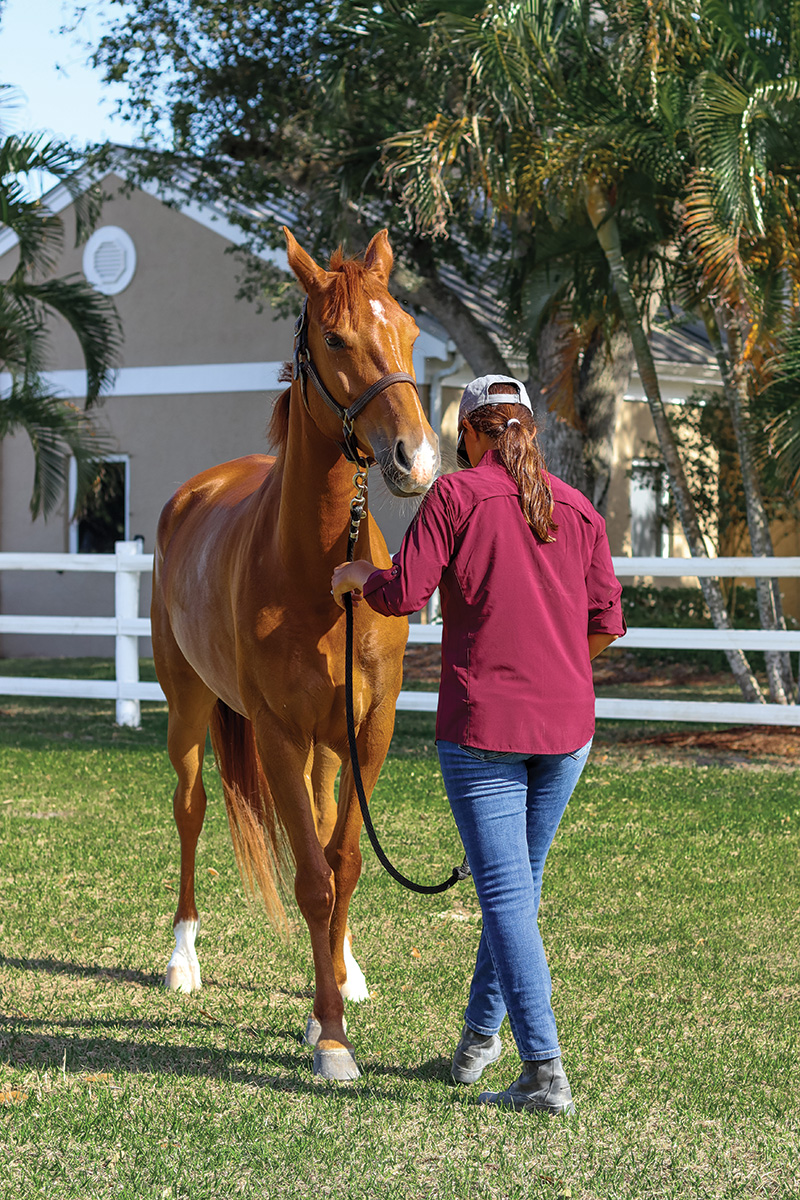
The first pressure used to ask your horse to back is a firm step toward him into his space. Second is a cluck; third is use of the lead rope toward the center of his chest. If he still doesn’t understand, it may take some taps from a dressage whip or the end of the lead rope to convey the idea.
Once he understands and moves backward any amount, reward, walk forward, halt, and reset. The goal is for your horse to eventually back in response to just the step into his space. This groundwork exercise is best done from both sides so that your horse learns to respond to you stepping toward both his left and right forelegs.
Groundwork Exercise: Moving the Haunches
The last of the groundwork exercises covered here will be moving the haunches. Stand facing your horse’s hip, and from there, the progression of pressure is identical to backing. Step into your horse’s space toward his hip, followed if needed by a cluck, then a tap from a dressage whip.
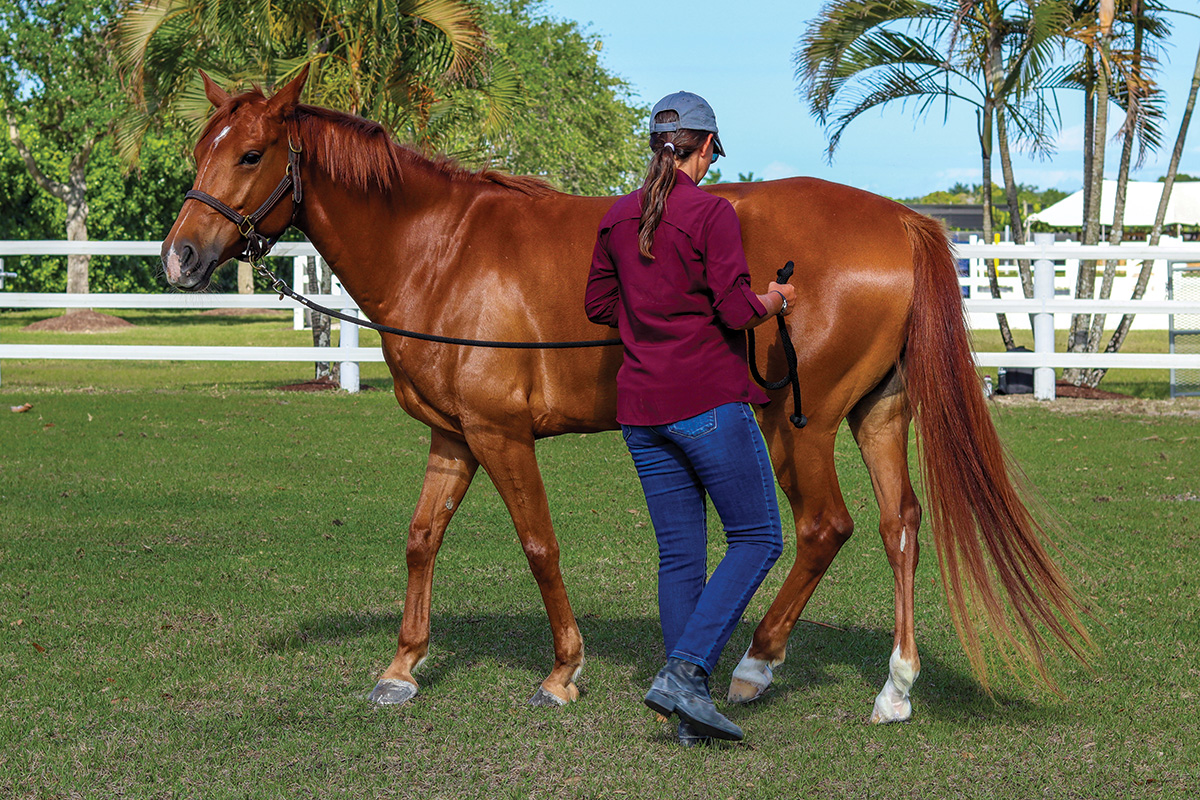
This is another exercise that should be done equally on both sides of the horse. It’s important to note that neither in backing nor in moving the haunches is the horse moved by you pulling him into position. All of his movement should be self-motivated and in response to the pressure you applied.
These basic groundwork exercises are just the beginning of many ways we can better relate with our horses from the ground. Once these concepts are solidly taught, your horse is one step closer to being a better partner under saddle due to his improved understanding.
Groundwork Exercises for Young Horses
As an important tool for establishing communication with your horse, groundwork exercises are quite beneficial in developing young horses.
In this video from Ridely, in-hand and long-lining expert Claudio Oliveira demonstrates the first steps when starting this work with the young horse. The aim is to get the horse to move away from the pressure and to listen and respond to Claudio’s voice aids. He starts by desensitizing the horse to the whip to build his confidence and once the horse understands moving away from the pressure, Claudio introduces some baby leg yield and some turns on the forehand. He emphasizes that it does not have to be perfect; the horse just has to respond. This is a great beginner’s exercise to build the horse’s confidence in the groundwork before starting with long lines. Register for Ridely PRO to access 450+ other useful training videos.
A Note on Nose Chains
If your horse tends to pull you off balance or at any time you feel out of control, use of a nose chain is completely acceptable. Some horses may be able to graduate from the nose chain, while others may not. Escalation of pressure applies to nose chains as well. Walking a horse with a nose chain doesn’t mean that the chain is being used constantly—it’s simply an additional, stronger boundary.
This article about groundwork exercises appeared in the August 2022 issue of Horse Illustrated magazine. Click here to subscribe!




